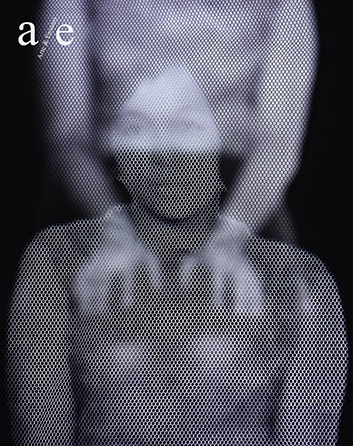Object films
Still life between experimental cinema and video art
DOI:
https://doi.org/10.60001/ae.n47.4Keywords:
Still life, Experimental cinema, Video art, ObjectAbstract
In this article I analyze some historical and conceptual elements of still life, seeking to identify points of relationship with audiovisual procedures. In particular, I develop the following argument: based on some interpretations of the still life genre, we can assume that, usually, these images deal with objects found in the domestic spaces. Some filmmakers and video artists also focus their attention on everyday domestic life and, eventually, film the things that inhabit these spaces, producing what we might call a cinema of still life. In fact, this possible film genre has already been mentioned by some authors. However, when transposed to cinema, still life acquires new characteristics. Without trying to overdetermine them, I elaborate on some of its meanings, considering the work of filmmakers and video artists who have made inanimate objects the main motto in some of their works. Finally, I identify other basic features of this possible audiovisual genre.
Keywords: Experimental cinema. Video art. Still life. Object.
References
BRAKHAGE, Stan. In defense of amateur. Hambre. 2014. Disponível em: https://hambrecine.com/wp-content/uploads/2014/05/in-defense-of-amateur-brakhage.pdf. Acesso em 27 jun. 2024.
BRYSSON, Norman. Looking at the overlooked: four essays on still life painting. London: Reaktion Books, 1990.
BURCH, Noël. To the distant observer: form and meaning in the Japanese cinema. Berkeley: University of California Press. 1979.
DELEUZE, Gilles. Cinema 2: a imagem-tempo. Trad. Eloisa de Araújo Ribeiro. São Paulo: Brasiliense, 2018.
DEREN, Maya. Amateur vs professional. Buenos Aires: Hambre: espacio cine experimental, 2013.
GUIMARÃES, Cao. Cinema de cozinha: texto escrito para a mostra retrospectiva cinema de cozinha. São Paulo: Sesc-SP, Sesc-Vila Mariana, 2008. Disponível em: https://www.caoguimaraes.com/wordpress/wp-content/uploads/2012/12/cinema-de- cozinha.pdf. Acesso em 12 jan. 2022.
LINS, Consuelo. Cao Guimarães: arte documentário ficção. Rio de Janeiro: 7Letras, 2019.
MEKAS, Jonas. On goodness and cinema. Movie Journal: the rise of a new american cinema, 1959-1971. New York: The Macmillan Company. 1972.
MEKAS, Jonas. Dripping Water. New York Times.1969. Disponível em: https://lightcone.org/en/film-11541-dripping-water. Acesso em 14 dez. 2021.
MOURÃO, Patricia. A invenção de uma tradição: caminhos da autobiografia no cinema experimental [manuscrito]. São Paulo, 2016.
PESSÔA, Alexandre Neiva. Estevão Silva e a pintura de naturezas mortas no Brasil do século XIX. Rio de Janeiro: EBA, UFRJ, 2002.
PINA, Raisa Ramos de. A longa vida da natureza-morta: gênero, segregação, subversão. Curitiba: Appris, 2020.
SCHAPIRO, Meyer. The apples of Cezanne: an essay on the meaning of still-life. In: Modern Art. 19th & 20th Centuries. New York: George Braziller, 1978.
SCOVINO, Felipe. Rosto em suspenso: marcos iniciais da videoarte no Brasil. Arte & Ensaios, v. 26, n. 39, jan.-jun. 2020.
SNOW, Michael. Scott McDonald, interview with Michael Snow. In: DIXON, Wheeler Winston; FOSTER, Gwendolyn Andrey (orgs.). Experimental cinema: the film reader. New York: Routledge. 2002.
Downloads
Published
Issue
Section
License
Copyright (c) 2024 Arte & Ensaios

This work is licensed under a Creative Commons Attribution 4.0 International License.
Autores que publicam nesta revista concordam com os seguintes termos:- Autores mantém os direitos autorais e concedem à revista o direito de primeira publicação, com o trabalho simultaneamente licenciado sob a Licença Creative Commons Attribution que permite o compartilhamento do trabalho com reconhecimento da autoria e publicação inicial nesta revista.
- Autores têm autorização para assumir contratos adicionais separadamente, para distribuição não-exclusiva da versão do trabalho publicada nesta revista (ex.: publicar em repositório institucional ou como capítulo de livro), com reconhecimento de autoria e publicação inicial nesta revista.
- Autores têm permissão e são estimulados a publicar e distribuir seu trabalho online (ex.: em repositórios institucionais ou na sua página pessoal) a qualquer ponto antes ou durante o processo editorial, já que isso pode gerar alterações produtivas, bem como aumentar o impacto e a citação do trabalho publicado (Veja O Efeito do Acesso Livre).


